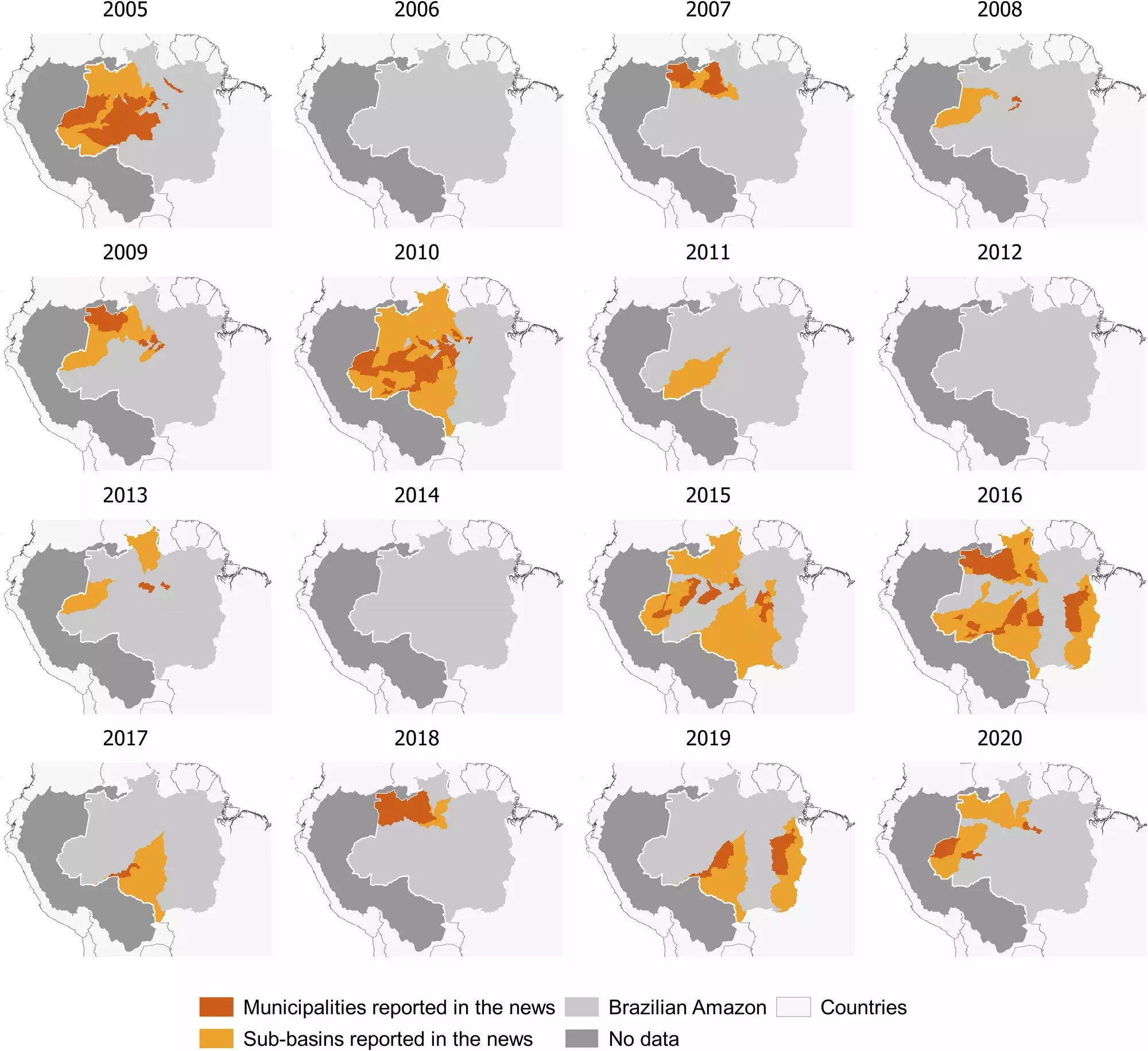In recent decades, the Amazon basin has shifted from a lush haven to a stark emblem of climate change’s wrath. Severe droughts, unprecedented in both frequency and severity, have left an indelible mark on this delicate ecosystem, heavily impacting the communities that call it home. A groundbreaking study from the Institute of Environmental Science and Technology of the Universitat Autònoma de Barcelona, led by Brazilian scientist Letícia Santos de Lima, has illustrated the grim reality faced by both Indigenous and non-Indigenous populations in Brazil’s Amazon.
This research highlights that severe droughts, particularly in 2005, 2010, and 2015–2016, have inflicted longer and more intense dry spells, disrupting river systems that serve as lifelines for communities engaged in predominantly aquatic lifestyles. With nearly half of non-Indigenous localities and over half of Indigenous villages now facing isolation, it’s clear that the consequences of prolonged droughts extend far beyond environmental degradation—they threaten the very fabric of societal existence in the Amazon basin.
The Hydrological Crisis
The study’s findings are both alarming and sobering. Drought periods have lengthened, resulting in low water levels that linger for over a month longer than the historical norm. The core of the problem lies in the reliance on rivers and wetlands as transportation routes for goods, access to healthcare, and educational opportunities. When water levels plummet, lives grind to a halt, with communities unable to reach urban centers or markets. The implications are dire: scarcity of resources, inaccessibility to medical care, and stifling limitations on traditional fishing and hunting practices.
In this context, reliance on inland water transport—a hallmark of life in the Amazon—reveals vulnerabilities that often go unrecognized by those outside the region. Without means to navigate their waterways, these communities face existential threats. The research team employed an interdisciplinary method, combining hydrology, spatial analysis, and media content to give voice to these experiences, painting a vivid picture of the repercussions that severe droughts have wrought.
Challenging Policy and Government Response
Even more disheartening than the physical and social ramifications is the woefully inadequate policy response. As stated by Dr. Lima, the Amazon has become a case study for alarmingly reactive governance rather than forward-thinking mitigation strategies. Local and national governments have largely failed to adapt to the new environmental realities, lacking a cohesive approach to long-term sustainability. This non-proactive stance warrants urgent reevaluation, especially when the scientific community has consistently issued warnings regarding the escalating impacts of climate change in the Amazon basin.
This critical analysis brings forth another significant issue: the notion that building more roads will alleviate isolation during droughts. Such an approach is fundamentally flawed, for roads have historically facilitated deforestation, which only exacerbates climate issues. Deforestation disrupts local hydrological cycles, resulting in less rainfall and further reduced river navigability, perpetuating a vicious cycle of isolation and resource scarcity. A more innovative, holistic solution must be sought, one that prioritizes community resilience and ecological preservation over short-sighted infrastructural expansion.
Voices from the Ground
The voices of those living in the Amazon speak volumes about the urgent need for change. Residents are not merely passive victims of environmental shifts; they are stewards of their ecosystems, and their experiences provide essential insights into effective adaptation strategies. What’s needed now is an acknowledgment of their expertise. It requires bridging the gap between scientific research and local knowledge, ensuring that policies reflect the reality on the ground.
Moreover, international attention is crucial. The plight of the Amazon basin reverberates around the globe, representing a vital part of the Earth’s ecological balance. Stronger global coalitions and partnerships are essential to forge strategies that transcend national borders. Climate change is a collective issue; therefore, global solidarity and support for Amazonian communities should be at the forefront of environmental discussions.
Urgent, informed action is required to secure a sustainable future for the Amazon basin. It’s imperative that the discourse surrounding climate change shifts from mere recognition of the crisis to action—considering both the environmental impacts and the lives of those at the heart of the Amazon.


Leave a Reply